 COMBAT TRAINING PRE-1944 COMBAT TRAINING PRE-1944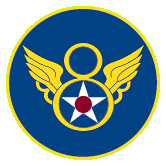 By:Capt. Arthur W. Heiden, 79THFS/20THFG |
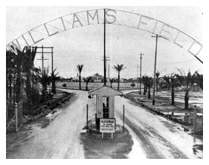 � � All of my Flight Training took place in 1943. Graduated advanced flying school, Williams AAF Base, Class-43H, Aug. '43.; RTU during Sep-Oct-Nov-Dec. '43.; at Muroc Dry Lake, Salinas, and then North Island Naval Air Station, at San Diego. All through flying school and RTU there was a wide range in the quality of instructors. Starting in Primary, an instructor was assigned 5 or 6 students, all but one or two were promptly washed out. It seemed obvious to us, for no other reason than a reduction in work load. We students graded them from the number of students each instructor kept. Merced basic training could be a horrible experience. I was most fortunate to have received the best instructor and Squadron Commander in my class. They saved my hide many times. Still, I felt lucky to have to just walk off hours and hours of punishment tours with a toilet seat around my neck. No student was immune to the insane treatment of other instructors. Verbal abuse was continuos. One ghoul (still remember his name) screaming insanely, would grab the control stick from his student and flail it with all his strength to beat his legs and hands bloody. � � All of my Flight Training took place in 1943. Graduated advanced flying school, Williams AAF Base, Class-43H, Aug. '43.; RTU during Sep-Oct-Nov-Dec. '43.; at Muroc Dry Lake, Salinas, and then North Island Naval Air Station, at San Diego. All through flying school and RTU there was a wide range in the quality of instructors. Starting in Primary, an instructor was assigned 5 or 6 students, all but one or two were promptly washed out. It seemed obvious to us, for no other reason than a reduction in work load. We students graded them from the number of students each instructor kept. Merced basic training could be a horrible experience. I was most fortunate to have received the best instructor and Squadron Commander in my class. They saved my hide many times. Still, I felt lucky to have to just walk off hours and hours of punishment tours with a toilet seat around my neck. No student was immune to the insane treatment of other instructors. Verbal abuse was continuos. One ghoul (still remember his name) screaming insanely, would grab the control stick from his student and flail it with all his strength to beat his legs and hands bloody. � � However, with the greatest of glee, some other students and I watched another student get even. We had several Auxiliary Fields. These were a half mile square piece of Tarmac with an old fashioned outdoor toilet in the center where we all gathered and waited our turn to fly. This student got in the BT-13 and started the engine while waiting on that crazy instructor who had went into the facility. Somehow, the BT stared rolling forward right into the outdoor facility which disintegrated into small pieces with the instructor retreated to the top of the toilet seat with his pants down around his feet and a prop spinning in his face. All the instructors and students laughed so hard the crazy never dared to report it. It never stopped his old habits though. I have another get even story. � � Basic was where we were asked for our choice of advanced training. I asked for and I thank my instructor, Lt. Christensen, for giving me my choice of P-38's. None of us had any hope of getting our choice. 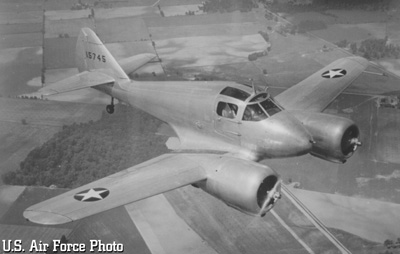 A Curtiss AT-9 Advanced Trainer � � I lucked out in advance, too. Drawing a new green instructor, me and the AT-9 scared him into quitting before I even soloed. The lucky part was being taken under the wing of the Squadron CO and the best instructor pilot in the world. Capt. Ashenbrenner (had a brother who was an Ace in the SWP) made me love the AT-9 and took me way beyond anything else being taught in advanced schools. His instrument training with zero-zero landings and takeoffs have been so valuable throughout 50 yrs of flying. Ashenbrenner could easily have washed me out and cut his work load. Most instructors would have. I'm so grateful.  North American AT-6 Trainer � � At Ajo, we got to fly the AT-6 in gunnery. This was a wonderful trainer. Fly the Six and you could fly all the S/E fighters and this was the last gunnery training we would receive. At Williams Field we were transitioned to the RP-322, the castrated P-38. Getting ten hours just before graduation was a very big boost into a mix of production P-38 models in RTUs. The new pilots were more than fortunate to have these 200 (?) RP-322's. If the Britts had taken delivery of them the P-38 training program may have suffered immensely. P-38s were desperately wanted in all theaters. � � We new P-38 trainees were lucky in many respects; we had been selected to and given our dream. Also, we would be trained in the aircraft that we would go to war in, and many combat returnees were just starting to enter the instructor ranks. � � The major problems included such as a disgruntled body of old instructors who had no incentive and consequently cared less about the trainees, assimilating new ideas, or improving on what they knew which was next to criminally negligent. This super airplane needed to have its operational knowledge developed way beyond what had ever been conceived. These Instructors were stuck in the training command with no hope of promotion and all applications to get out refused. An absurd stagnation developed at all levels. Now their class mates were starting to return from combat as Captains and in some cases Colonels, generally two grades higher in rank. � �This obstruction was compounded by politics, both inside the Military and civilian. Bulletin Boards were layers thick with directives - don't do this -- don't do that - not one carrot - not one reward. � � One of the most blatant "don'ts" was the prohibition of all individual combat between themselves, the Air Force, Navy, and Marine fighters. All these pilots were more than willing, wanted to sharpen their skills, and learn from the experienced Navy and Marine fighter pilots just back from the Pacific War. No - No - No, the navy even put out patrols of specially painted fighters to prevent it. Numbers taken and court marshals were threatened - No Dog Fights, no gunnery, no way to integrate acrobatics and individual combat, and no way to learn how to avoid an iron hose full of API from being run up your six. � � We did get a lot of close formation - that was good. Also, lots of "rat racing" around clouds - a lot of fun. Instructors had been watching Battle of Britain movies and thought air combat was still done in trail. The Germans had invented "finger four" spread out combat in WWI and had been using it with deadly effectiveness ever since. No one was listening except the guys just back from North Africa. So simple, but so complex in its subtleties, and effectiveness in offence as well as defense that it just whiffs over the heads of those that had never experienced it in combat. Like a complex football play, an instructor had to display it on a blackboard and insert every player into every position and force him to visualize every move at every second as it is played out. From all this the integrity of a combat formation is developed. All must be able to maneuver violently, see everything, be seen by everyone and maintain his area of responsibility in a "mixmaster" environment. Practice would develop a comfortable feel for it. Trouble was, there were few Don Blakeslee types out there demanding inflexible objectives until late in '44.  Cadet Arthur Heiden � � Two types of fighter training were going on at the same time. The RTU (Replacement Training Unit). And the OTU (Operational Training Unit). The OTU was fighter groups which were preparing to be sent to a combat theater as a unit. The 20thFG, 55thFG, 364thFG and 479thFg were trained in P-38's and sent to the 8thAF. They seemed to have received most of the experienced combat returnees. We felt our instructors were rejects from these programs. � � The 354thFG was trained in P-39's (Pioneer Mustang ) sent to the 9thAF in UK, liberated some MustangII's from the Brits, and went operational for the 8thAF the week of Schweinfurt. The 357thFG, also trained in P-39's, shipped to the 8thAF, and went on Ops Feb 11, '44. Both these groups were lead on first missions by Don Blakeslee. Likeing the Mustang so well he went to 8thAF and demanded them for the 4thFG. When told it would take to long to transition he came up with his famous line, "We'll transition on the way to the target." Which they did on Feb 25, '44. Many anecdotes about Blakeslee were developed from the 354th's and 357th's experience with him. What ever he did, he left a permanent attitude and impression on these groups. � � From friends in the 357thFG, I deducted that their training was very different from what we in RTU's received. Notable, was that each squadron had been working in training with a bomber group in training at the same time. One squadron had been at Tonopah, NV, others at Casper, WY, and at Ainsworth, NE, working with bombers out of Utah, Wyoming, and Rapid City, SD. Besides. Simulating attacks on and escort of bombers they receive a high amount of both aerial and ground gunnery with much dive and skip bombing, also navigation over the far reaches of the High Plains. � � RTU at North Island did give us good training in dive and skip bombing on the Salton Sea ranges. I did feel very competent in these. Introduction to navigation with Direction Finding Steers (DF) would be indispensable in England where it was honed to a fine art. 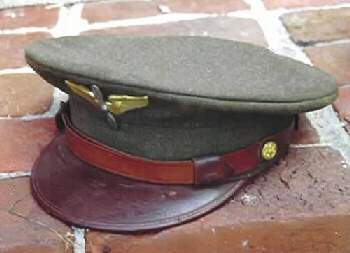 Air Cadet's Visor Redemption � � This has been placing to much blame on these instructors as a group who were placed into an untenable position in which they were next to defenseless. Let it be said that they were reacting, in general, as any one in their shoes would. The real blame should be on the prevailing attitude in the military and politicians from the top down. Many of these same men, when the war was closing down and they could get away from the training command got into operational units where they served with extreme competence and enthusiasm. In overseas units, at the end of the war, when pilots with combat time were only interested in transport home, these old instructors, with all their enthusiasm of at last getting into real airplanes with their stick and rudder abilities, rejuvenated those dead units and carried them into the Korean and Cold Wars. From late '45 on, they redeemed themselves and far exceeded all that was needed of them.
� � This term is only used to try to find an operative word that could contain a massive picture of development and reaching an attitude that will explore and force a continuous change for improvement. It's anonyms might be human nature and bureaucracy. Like a Black Hole it implodes and occasionally spits out some good. � � In the time frame of WWII, take an unusually advanced concept like a P-38, that cried out for development, then put it into the hands of a moribund bureaucracy. It came with it's Bible, the Technical Orders. Problem was it's world was rapidly changing and the paths of communication went through a wilderness. It took to long to go up and to return. Wonder why it reminds one of Moses in the wilderness story? � � One of these Black Holes that this lack of Professionalism compounded to trap many young P-38 pilots could have been resolved easily with a Central Training Facility and a modern day Simulator. Here all the latest information and techniques could have been exposed to the trainees and he could have developed all the automatic responses now available in certification and semi-annual refresher training. Reference: Col Rau's letter to 8th Fighter Command and his reference to how Col. Wilson saving a shot up and panicked pilot. 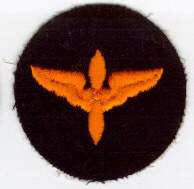 Multi-Engine Training � � With a single-pilot, with 200 to 300 hours was just not adequate and not possible when there was no contact with proficient instructors. Nor was it handed down from those that were proficient such as bombers pilots or the real experts such as transport and airline pilots. Hence, what you had was some ambitious pilots constantly running mind scenarios of what he would do at that instance if one engine failed; What if the left engine or the right engine failed; The different procedures for electrical, fuel, hydraulic, superchargers, navigation, and extracting himself. Or that pilot might be lazy and choose not to worry about it. Consequently, transferring to Mustangs was like going on vacation. � � Some procedures that were promoted in manuals and on training film were just blatantly wrong. Look at the recommended wing Flap procedures as they are presented on the Internet, that alone would not only be tough to operate but killed some pilots and tore up more P-38s. This wrong headed thing was promoted in all single pilot A/C through out WWII and years afterwards in most training planes. Seemed to be a secret of transport and airline pilots. � � Unbelievable and embarrassing, Aircraft flap systems were not built to take advantage of a simple aerodynamic fact nor were single pilots advised of it. Any aircraft built today would take advantage of this simple fact, the first 15-degrees of flap travel is mostly added lift - any more travel is mostly all drag. On any go around it is logical to get rid of any flaps over 15-degrees, as fast as possible. There should be a position built into the flap selector to trap the lever at this position. FULL POWER - GET RID OF All Drag! (Flaps to 15degrees-Gear-UP) At a predetermined Air Speed the aircraft will easily go around without any loss of altitude - single engine or otherwise. No hand will be occupied milking up flaps. This is the way Transport Category A/C are certified so they can make Single-Engine go-arounds at instrument minimums. � � To emphasize the opposing extreme, look at procedures for the P-40 and even the little Cessna-150. On go-around in a P-40, since there was no flap retraction modulation, the manual directed the pilot to have 500' before attempting flap retraction. The P-40's flaps just went up with a bang. � � In the P-38's time and that of most Twin-Engined aircraft, the pilots had much to deal with when losing an engine on T/O or on landing. The Manual stated that the minimum speed to continue flight was 120mph, but that the A/C had to be cleaned up and power reduced from T/O power (54"HG) to around 44"HG (METO) power on the good engine to maintain control. In other words, all the power you could apply and keep the A/C from rolling while holding full rudder into the good engine. Confusing the issue, the manual goes on to state that the A/C must be accelerated to 140mph to be controllable at T/O power which has a 5-minute limit. Well, most pilots in the P-38 program has watched some one, on T/O, roll over inverted and go in Next, ask that pilot if he knows of anyone who has bobbled a single-engine landing - watch both hands go up and finger counting start.
� � (From the Manual) "...once you have fully extended the flaps and landing gear or descended below 500 ft. you cannot again circle the field and must make a landing..............Apply as much power as can be held at the same time milk up (flaps) retracting landing gear accelerate to at least 160mph..." "Geez! Got to go around - What did that Manual say?" No one put any thought into this. The airplane's systems weren't up to it. The procedure was all wrong. Those now flying Light-Twins, even today, will know about this. Beginning with an attitude adjustment for the Air Corps, then a way to clean the airplane up rapidly, a Flap Actuator redesign, an improved hydraulic system, an aerodynamics review, and a consultation with a transport pilot would have prevented the bending up a lot of nice airplanes.
|
Unless otherwise noted, all content � copyright The Art of Syd Edwards 1999. All rights reserved and reproduction is prohibited.
